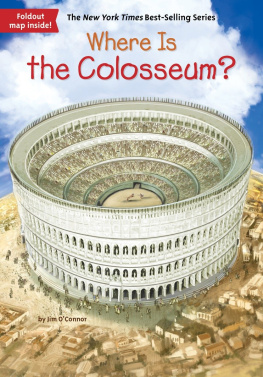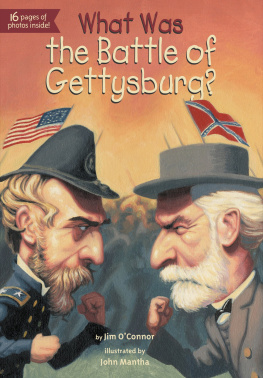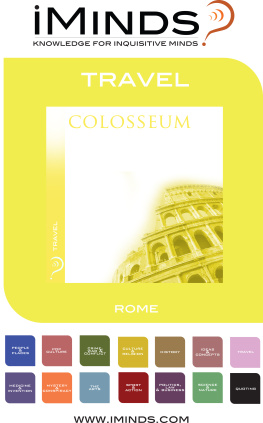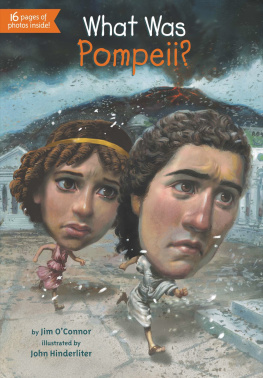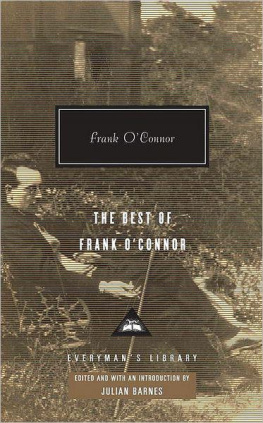Jim OConnor - Where Is the Colosseum?
Here you can read online Jim OConnor - Where Is the Colosseum? full text of the book (entire story) in english for free. Download pdf and epub, get meaning, cover and reviews about this ebook. year: 2017, publisher: Penguin Young Readers Group, genre: Religion. Description of the work, (preface) as well as reviews are available. Best literature library LitArk.com created for fans of good reading and offers a wide selection of genres:
Romance novel
Science fiction
Adventure
Detective
Science
History
Home and family
Prose
Art
Politics
Computer
Non-fiction
Religion
Business
Children
Humor
Choose a favorite category and find really read worthwhile books. Enjoy immersion in the world of imagination, feel the emotions of the characters or learn something new for yourself, make an fascinating discovery.
- Book:Where Is the Colosseum?
- Author:
- Publisher:Penguin Young Readers Group
- Genre:
- Year:2017
- Rating:3 / 5
- Favourites:Add to favourites
- Your mark:
- 60
- 1
- 2
- 3
- 4
- 5
Where Is the Colosseum?: summary, description and annotation
We offer to read an annotation, description, summary or preface (depends on what the author of the book "Where Is the Colosseum?" wrote himself). If you haven't found the necessary information about the book — write in the comments, we will try to find it.
Where Is the Colosseum? — read online for free the complete book (whole text) full work
Below is the text of the book, divided by pages. System saving the place of the last page read, allows you to conveniently read the book "Where Is the Colosseum?" online for free, without having to search again every time where you left off. Put a bookmark, and you can go to the page where you finished reading at any time.
Font size:
Interval:
Bookmark:

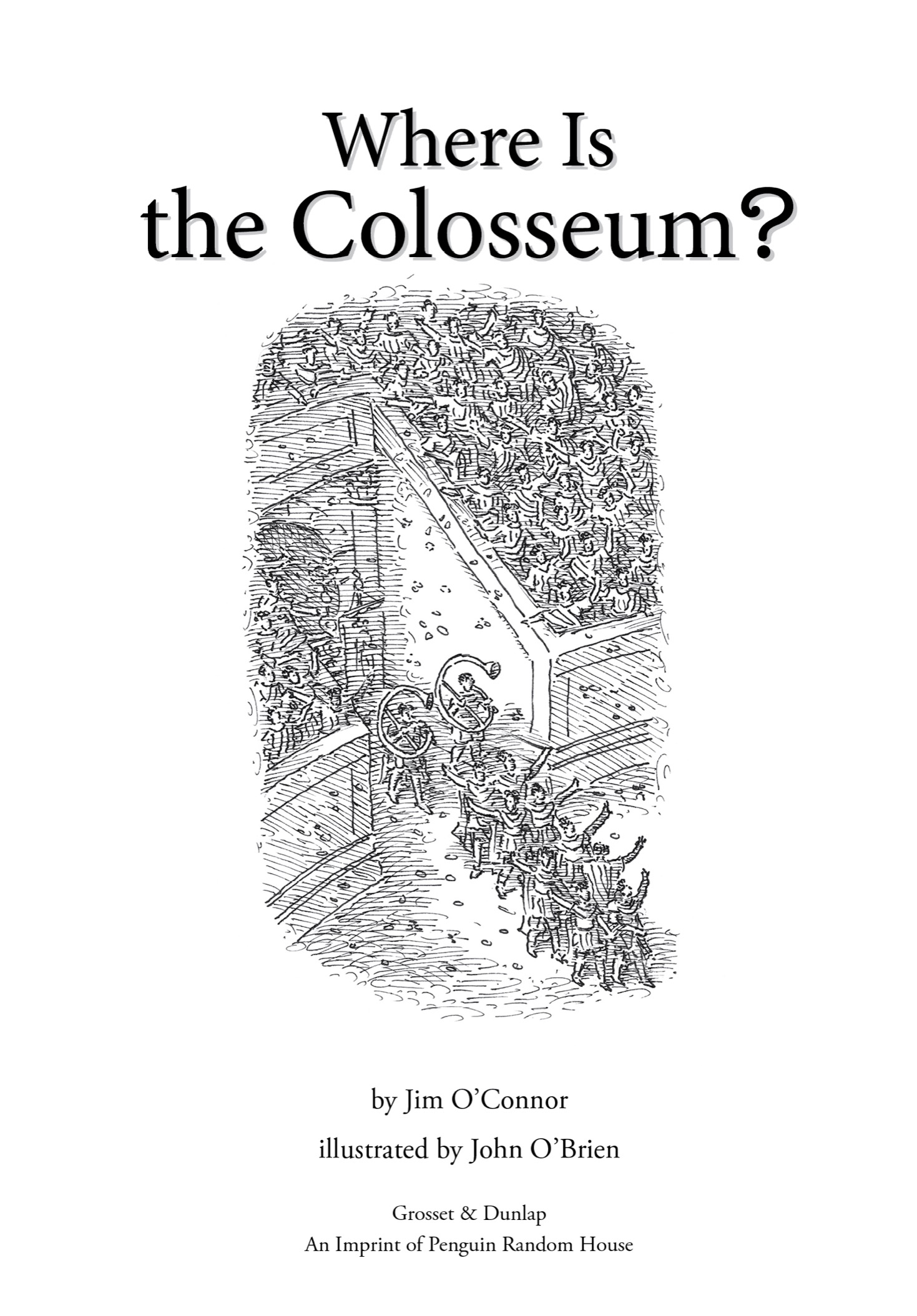
In memory of the Flavian EmperorsVespasian, Titus, and Domitianwho built the ColosseumJOC
For TeraseJOB
GROSSET & DUNLAP
Penguin Young Readers Group
An Imprint of Penguin Random House LLC

If you purchased this book without a cover, you should be aware that this book is stolen property. It was reported as unsold and destroyed to the publisher, and neither the author nor the publisher has received any payment for this stripped book.
Penguin supports copyright. Copyright fuels creativity, encourages diverse voices, promotes free speech, and creates a vibrant culture. Thank you for buying an authorized edition of this book and for complying with copyright laws by not reproducing, scanning, or distributing any part of it in any form without permission. You are supporting writers and allowing Penguin to continue to publish books for every reader.
The publisher does not have any control over and does not assume any responsibility for author or third-party websites or their content.
Text copyright 2017 by Jim OConnor. Illustrations copyright 2017 by Penguin Random House LLC. All rights reserved. Published by Grosset & Dunlap, an imprint of Penguin Random House LLC, 345 Hudson Street, New York, New York 10014. The WHO HQ colophon and GROSSET & DUNLAP are trademarks of Penguin Random House LLC. Printed in the USA.
Library of Congress Cataloging-in-Publication Data is available.
ISBN 9780399541902 (paperback)
ISBN 9780451533609 (library binding)
ISBN 9780399541919 (ebook)
Version_1
Contents
It is AD 80 and the streets of Rome are buzzing with excitement. The new emperor has promised one hundred days of games to celebrate the opening of an amphitheater that stands in the center of the city.
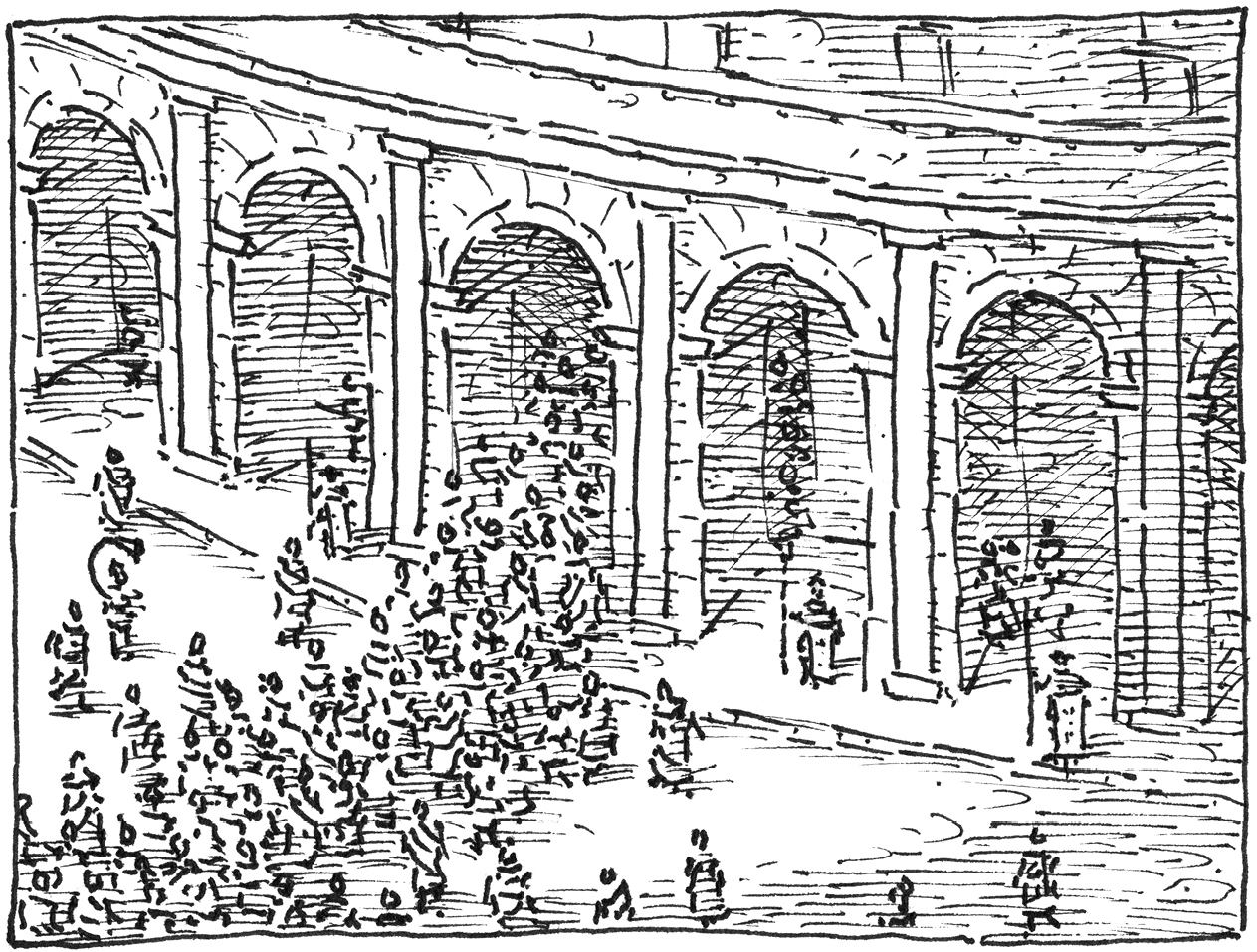
It is named the Flavian Amphitheater after the emperors family and is a marvel of engineering. It is huge, over 150 feet high, and will seat fifty thousand people. There are eighty entrances that quickly funnel spectators to their correct seats. There are snack bars, many water fountains, and even indoor bathrooms.
A massive canopy stretches over the open-air arena and provides shade for the crowd. It is operated by a team of one thousand sailors who can haul the canvas cloth canopya huge fabric roofinto position and adjust it as needed.
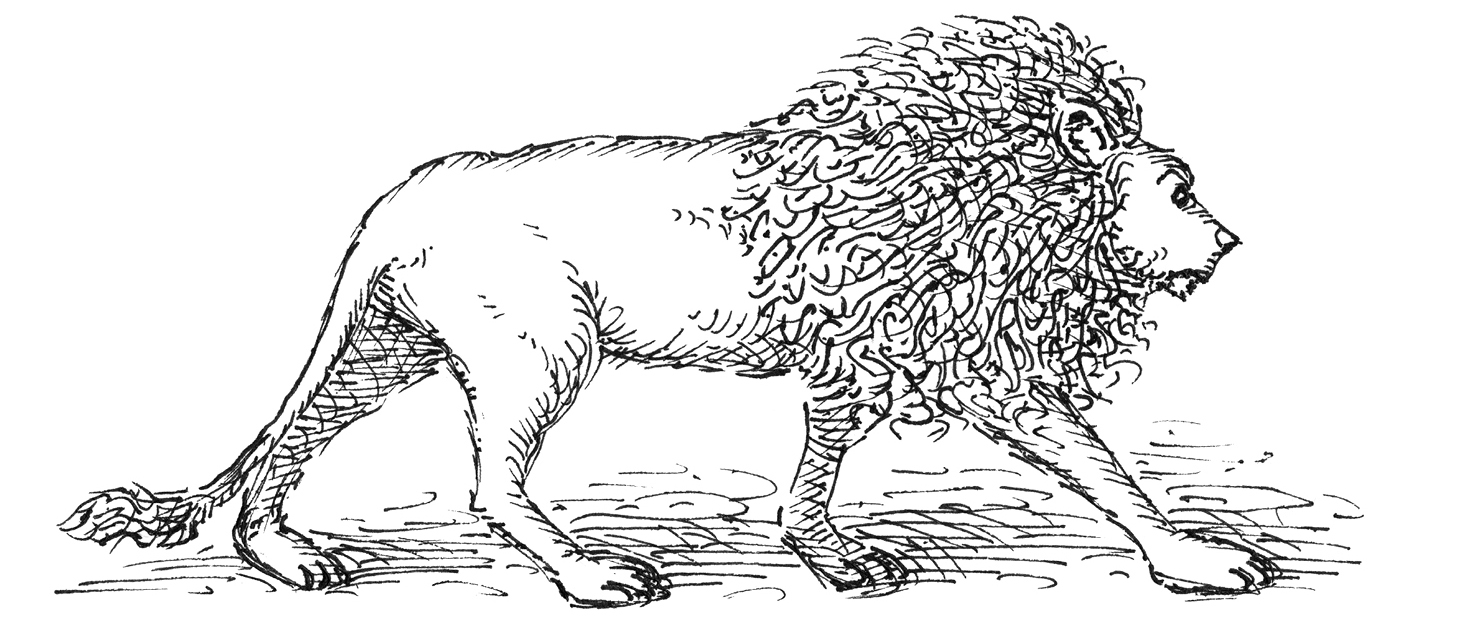
Todays show begins with battles between men and wild animals. The animalslions, tigers, bears, and elephantshave been brought from every corner of the Roman Empire. In the next hundred days, more than nine thousand animals will be slaughtered.
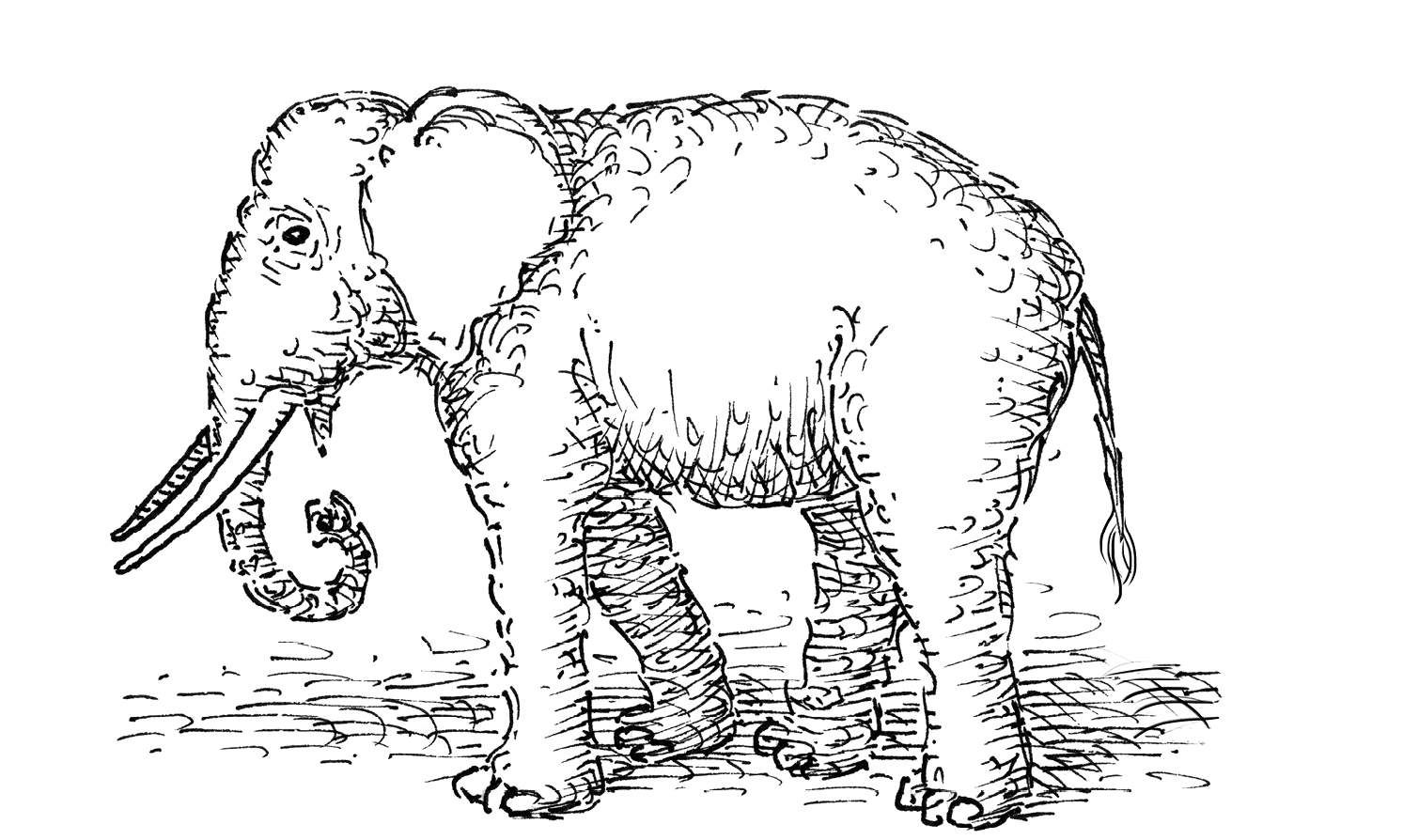
Later, at lunchtime, prisoners will be brought from jail to be torn apart by some of the animals or killed by soldiers. Although it is hard for us to understand, the crowds find this entertaining. The people of ancient Rome devoured this sort of spectaclethe bloodier the better.
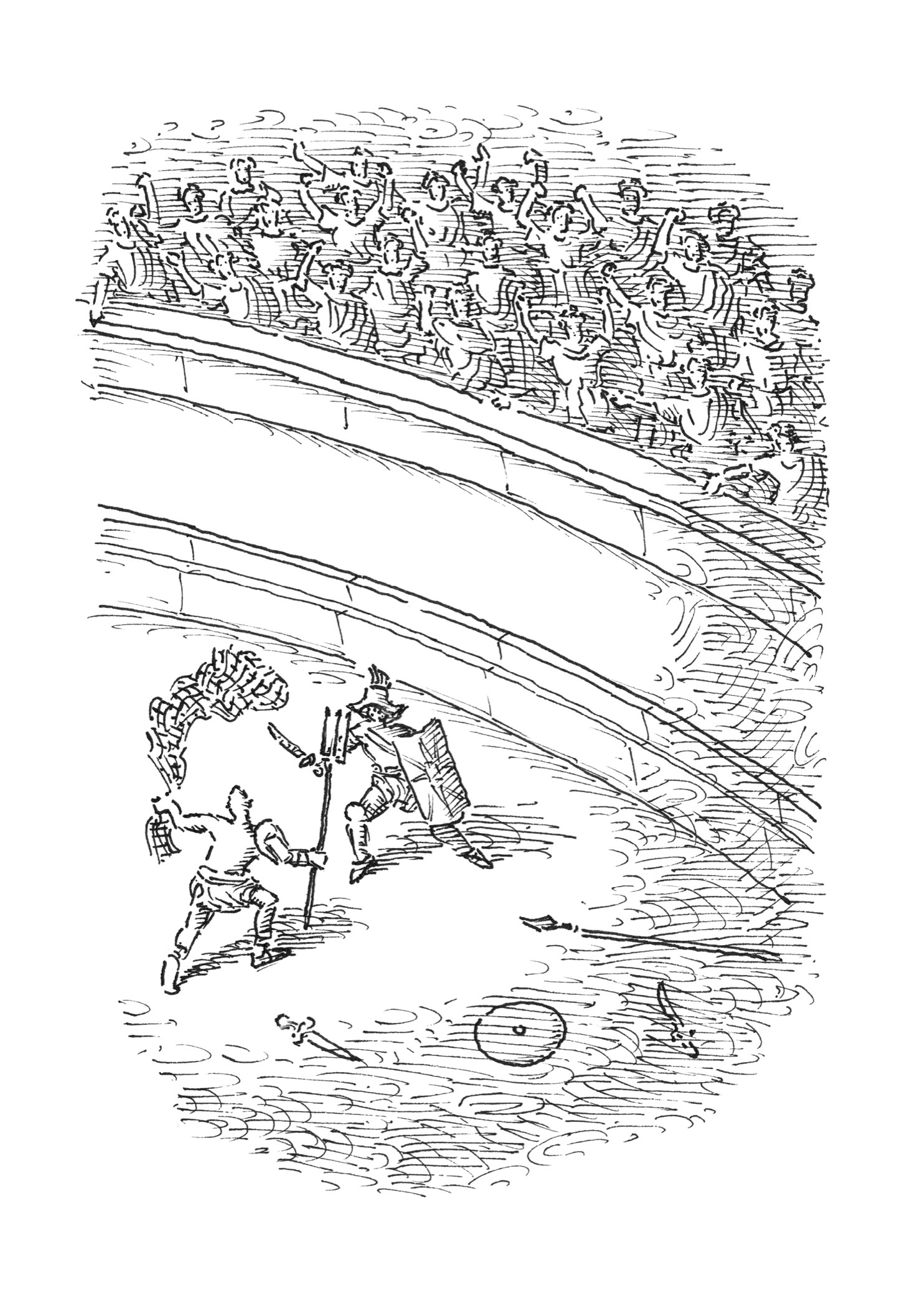
The high point of the day comes in the afternoonpairs of fighters called gladiators will fight each other with deadly weapons. People in the crowd root for whichever gladiator they want to win. They scream and cheer. Again, it is hard for us today to think of people killing each other as entertainment. But to the Romans, it was.
The grand opening of this huge arena marks a climax in the history of ancient Rome. The amphitheater is the largest ever built. Soon it will come to be called the Colosseum. Today, two thousand years later, it is a ruin. Yet it is still one of the most famous sites in all of Rome, in all of Italy. More than five million people visit every year to see a reminder of the bloody power of one of the worlds greatest empires.
How Rome Began
By the time the Colosseum opened, the city of Rome was almost eight hundred years old.
According to legend, Rome was founded in 753 BC by Romulus. Romulus and his twin brother, Remus, were the children of a human woman and Mars, the Roman god of war. Their mother, Rhea, left her twins to die in the Tiber River. But the twins floated down the river and were saved by a she-wolf. The wolf took care of the babies in a nearby area with seven hills.
According to one legend, when they grew up, the twins wanted to build a city on one of the seven hills. But they could not agree on which hill. Neither twin would give in and there was a terrible fight. Romulus killed Remus.
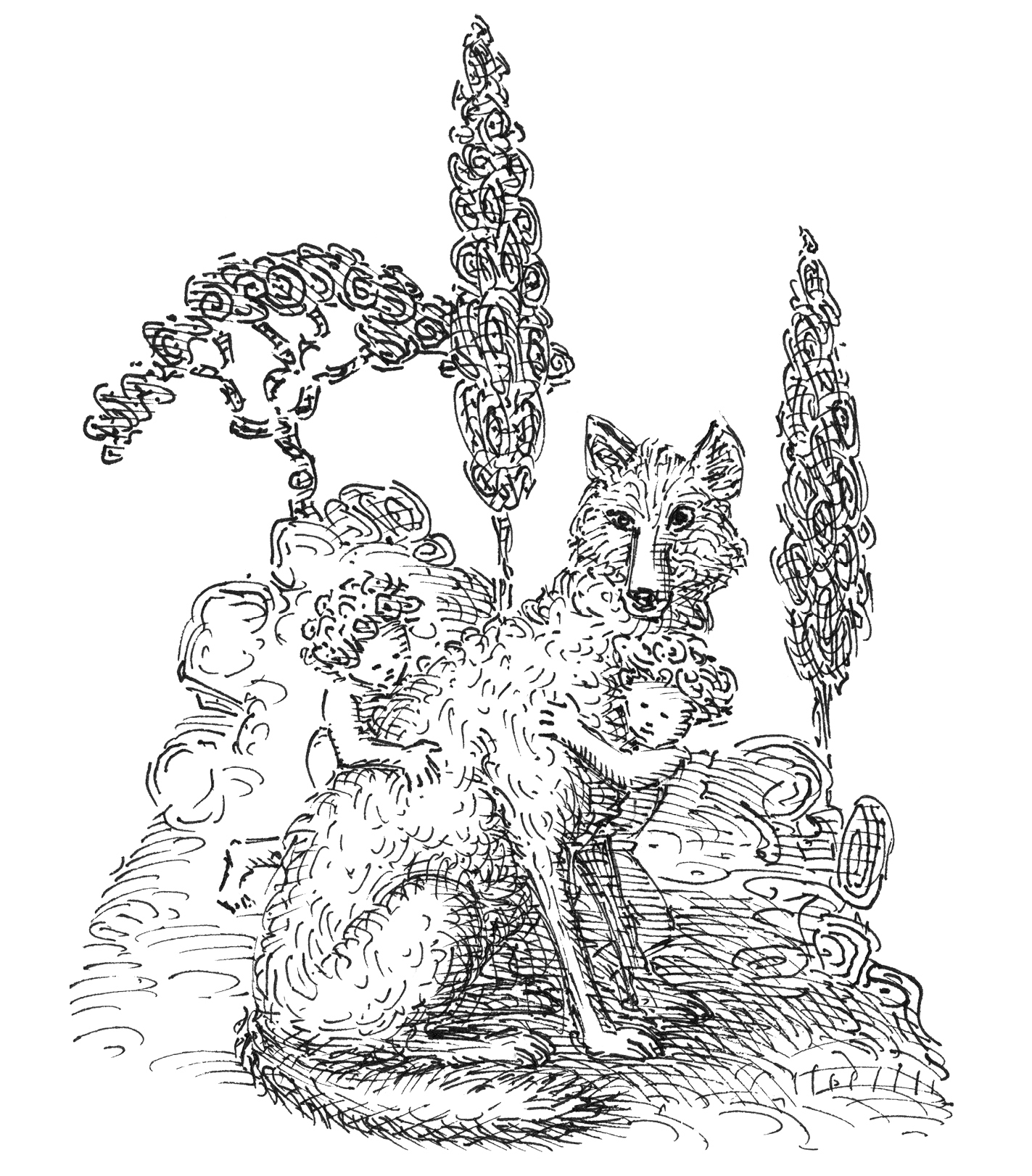
Romulus built his city exactly where he wanted and named it Rome, after himself. The people who lived there came to be called Romans.
The ancient Romans believed in many gods. Each god or goddess had different powers and duties. These were the twelve main gods:
- Jupiter was the king of the gods and, according to legend, the twin brother of Juno.
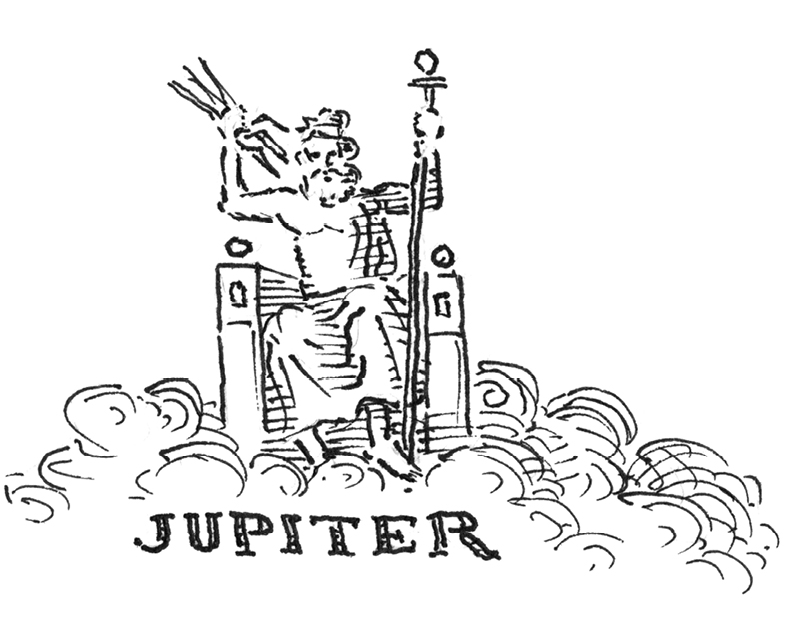
- Juno was the goddess of marriage.
- Venus was the goddess of love and the mother of the Roman people.
- Vesta was the goddess of hearth and home.
- Ceres was the goddess of agriculture and human fertility.
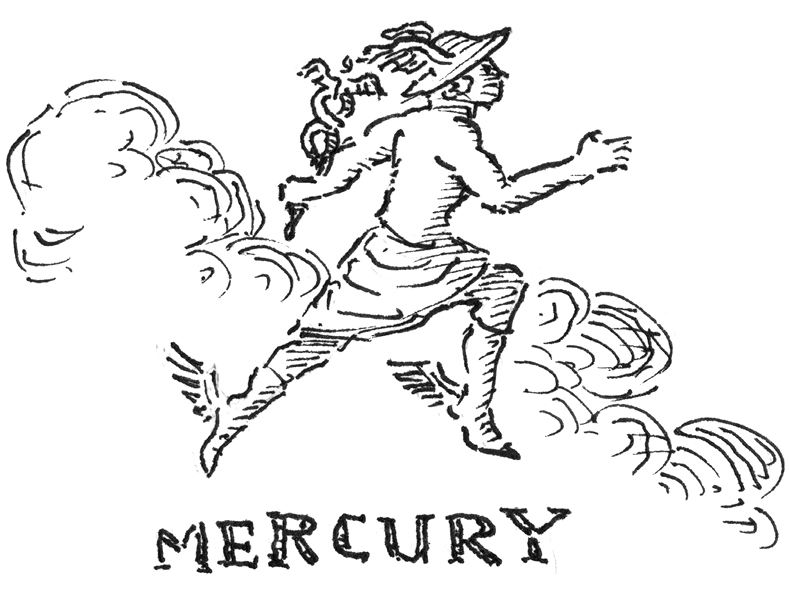
- Diana was the goddess of the hunt.
- Minerva was the goddess of wisdom.
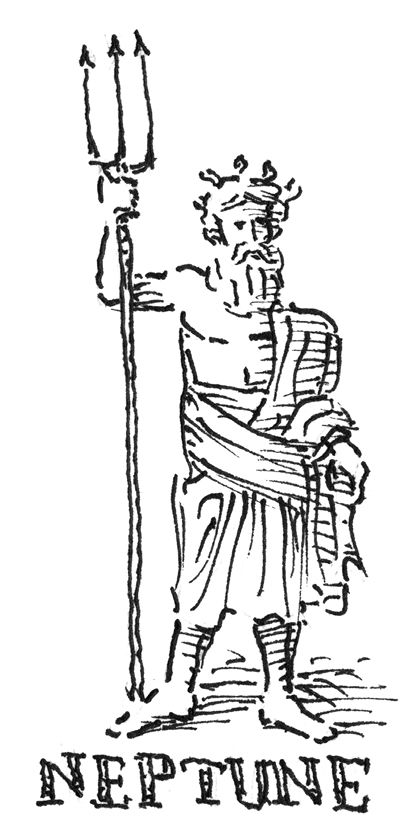
- Mars was the god of war.
- Vulcan was the god of fire.
- Mercury was Jupiters youngest son and also the messenger of the gods.
- Apollo was the god of the sun.
- Neptune was the god of the sea.
Over the next three hundred years, Rome grew so large that it covered all seven hills. It grew up along the banks of the shallow Tiber River.
Around 400 BC, Rome founded Ostia, a harbor city on the coast. From there Roman ships could sail to all the trading centers on the Mediterranean Sea. The Romans grew rich.
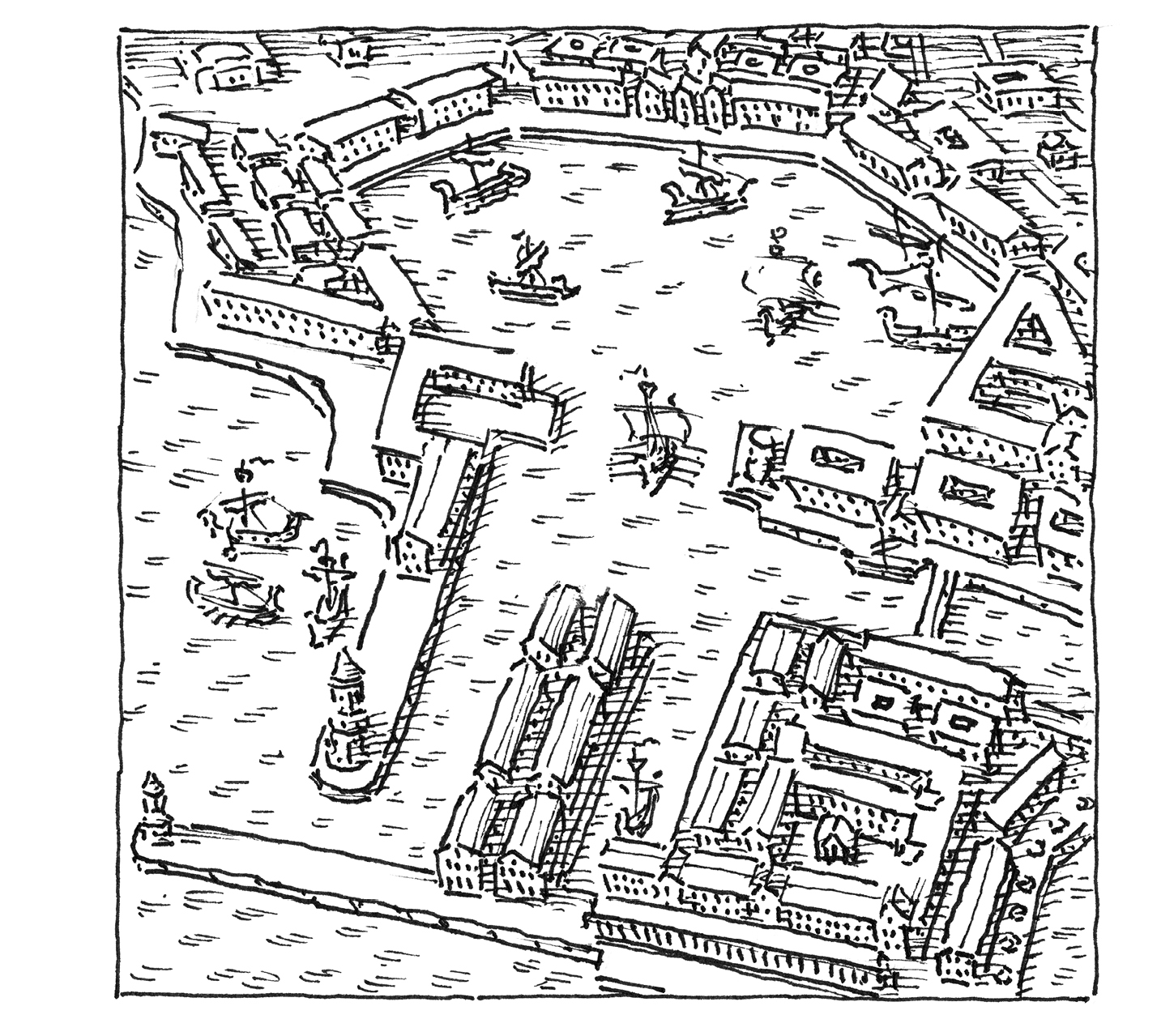
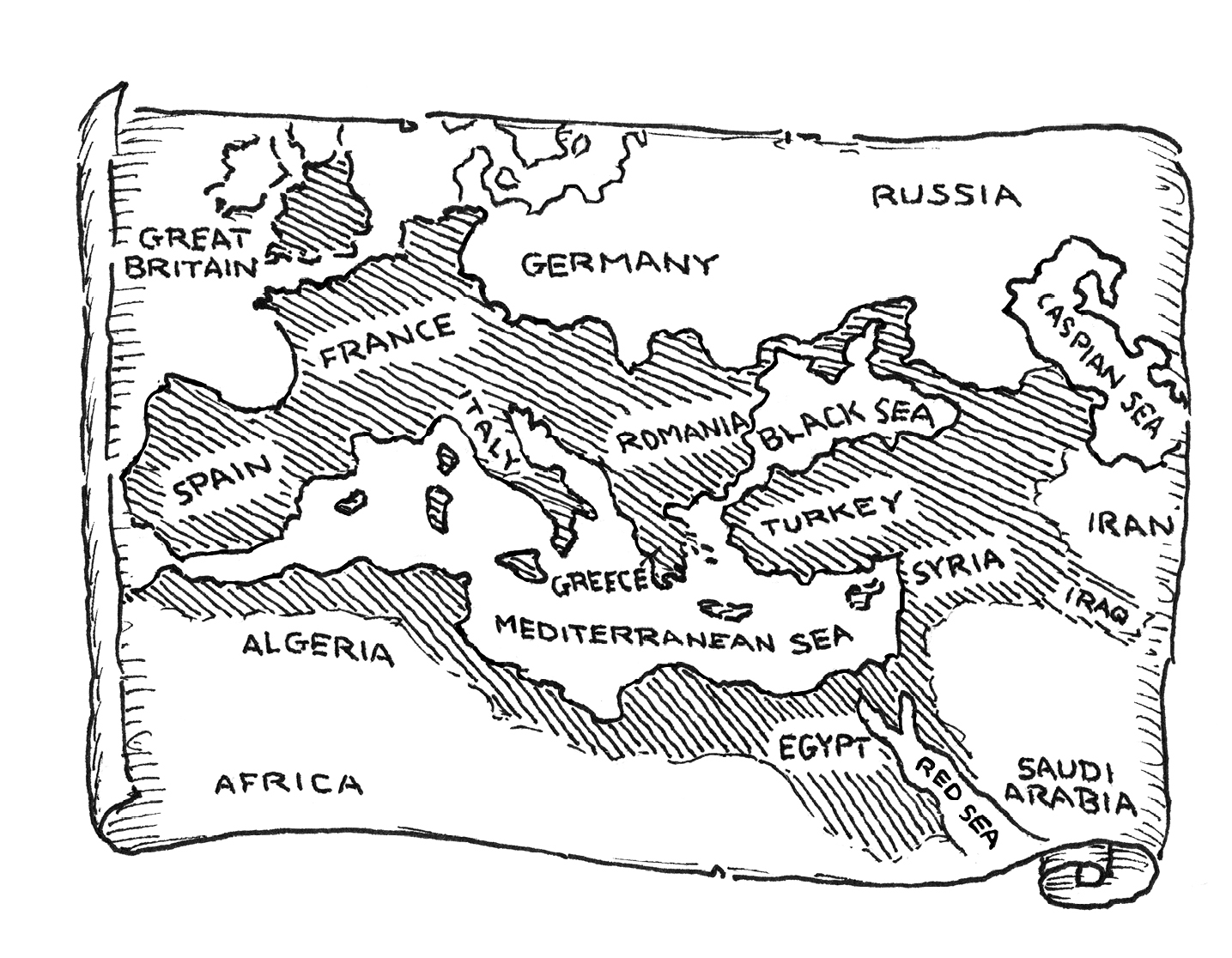
By 218 BC, Rome had conquered all of what is now the country of Italy. By AD 117, the Roman Empire stretched from Britain in the north through most of Europe and included all the land around the Mediterranean Sea. Countries that are today known as Turkey, Iraq, Iran, and Saudi Arabia were all part of the Roman Empire. The Romans brought their way of life to these conquered lands.
Font size:
Interval:
Bookmark:
Similar books «Where Is the Colosseum?»
Look at similar books to Where Is the Colosseum?. We have selected literature similar in name and meaning in the hope of providing readers with more options to find new, interesting, not yet read works.
Discussion, reviews of the book Where Is the Colosseum? and just readers' own opinions. Leave your comments, write what you think about the work, its meaning or the main characters. Specify what exactly you liked and what you didn't like, and why you think so.

